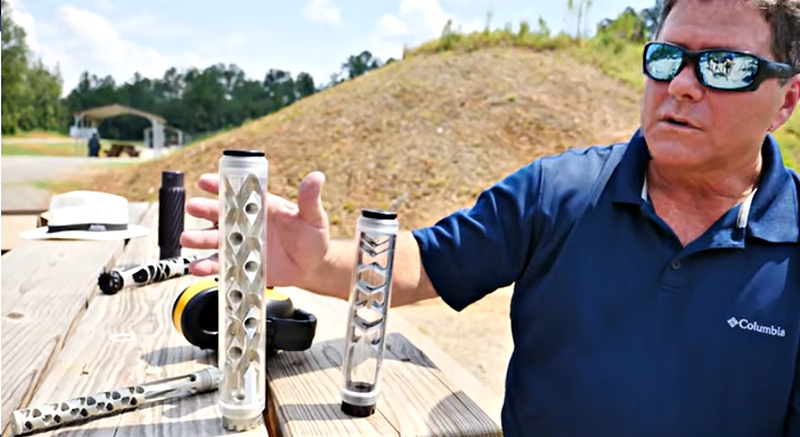Silencer. Suppressor. Muffler. No matter what you call it, it all acts the same and isn’t quiet, despite what Hollywood might have you think. Well, except for maybe a suppressed bolt-action 22. But I digress. Besides the obvious, how much do you really know about suppressors and how they work?
First Things First — Suppressor Basics
Let’s start with a little background on the subject before we get into the science of how it works. The ATF defines a suppressor as “…any device for silencing, muffling, or diminishing the report of a portable firearm, including any combination of parts, designed or redesigned, and intended for the use in assembling or fabricating a firearm silencer or firearm muffler, any part intended only for use in such assembly or fabrication.”
Further, they are subject to regulation through the National Firearms Act (NFA) of 1934, and as such, there is a $200 tax levied on the sale due by the end-user. But as we all know, it isn’t an easy or quick process to get one.
An individual must be at least 21 years of age to purchase one from a dealer or 18 years old to purchase from one from another individual on a Form 4. Additionally, you need to be a citizen of the United States and be eligible to purchase a firearm. Also, the end-user must be able to pass a federal background check and be legally able to own a suppressor in the state they reside in.
So, how does a suppressor work?
Now that we’ve got the basics out of the way, how does a suppressor work beyond attaching to the end of the firearm and muffling the sound? As the American Suppressor Association puts it, they are simply mufflers for firearms.

When the trigger is pulled, a controlled explosion of gunpowder pushes the bullet from the chamber down the barrel and out the muzzle. The hot gases from that explosion follow the trail of the bullet and expand rapidly into the significantly cooler environmental air, causing what we know as the muzzle blast. A suppressor works to trap those gases from expanding too quickly and allowing them to cool and dissipate at a slower rate, reducing the sound signature.
Knox from the American Suppressor Association uses balloons to illustrate the science of it in this video. Take a watch:
Most suppressors work in a two-stage system, essentially. The first stage inside the suppressor is what people refer to as the expansion chamber. This section works to capture the expansion volume of the gases at the muzzle and contain them. The highest pressures are generally inside this stage and this is one of the first failure points in the system.
The second stage of the system is a series of baffles that help move the gases around within the suppressor to further cool them. These baffles or other internals help restrict the flow to keep the gases inside the suppressor. The design or makeup of the internals depends on the pressures of the gases that are present, meaning a stronger material will be used for higher pressure rounds than say a .22Lr round.
A Closer Look
Now, suppressors vary between models and manufacturers in which type of internals they use to dissipate the gases in their system. Some use individual baffles while some use a monocore design. Additionally, attachment to the host weapon also differs to best match the system. Regardless of which design is employed, they all work in the same manner to trap expanding gases and make the overall system quieter.

Watch It Work
Dustin from Smarter Every Day on YouTube worked together with the gentlemen from Soteria Suppressors to do slow-motion videoing to show how the gases flow within a system. They used suppressors with see-through acrylic sleeves and high-speed cameras to make viewing so much easier.


Watch the whole video to get a more complete sense of suppressor science and engineering.
In the video, they are able to show how the expansion chamber works and the extent of the pressures on the system. In one example, the expansion pressures of the system causes a failure of the sleeve, and the axial pressure launches the sleeve downrange. In another test, the pressures shattered the sleeve.
So, in a nutshell, that’s how a suppressor works. Questions? Let us know in the comments.


